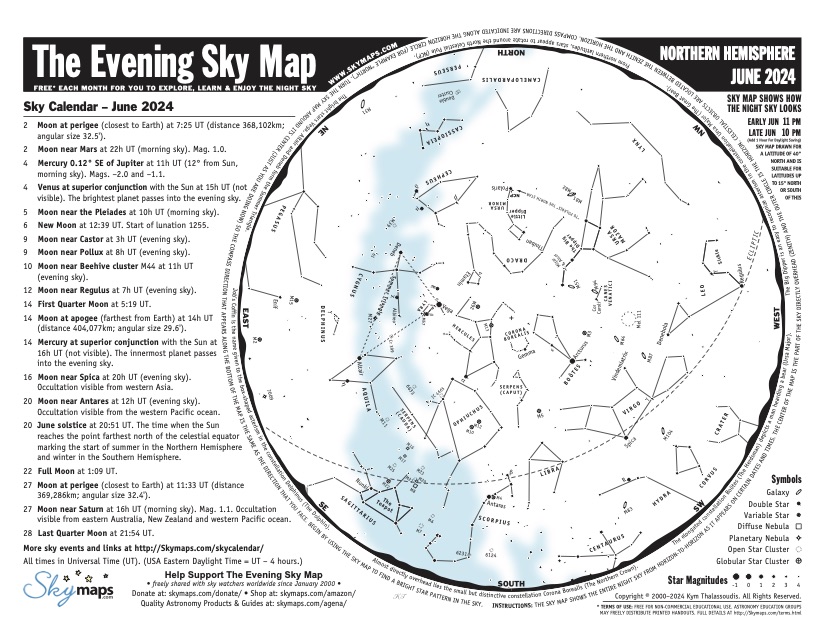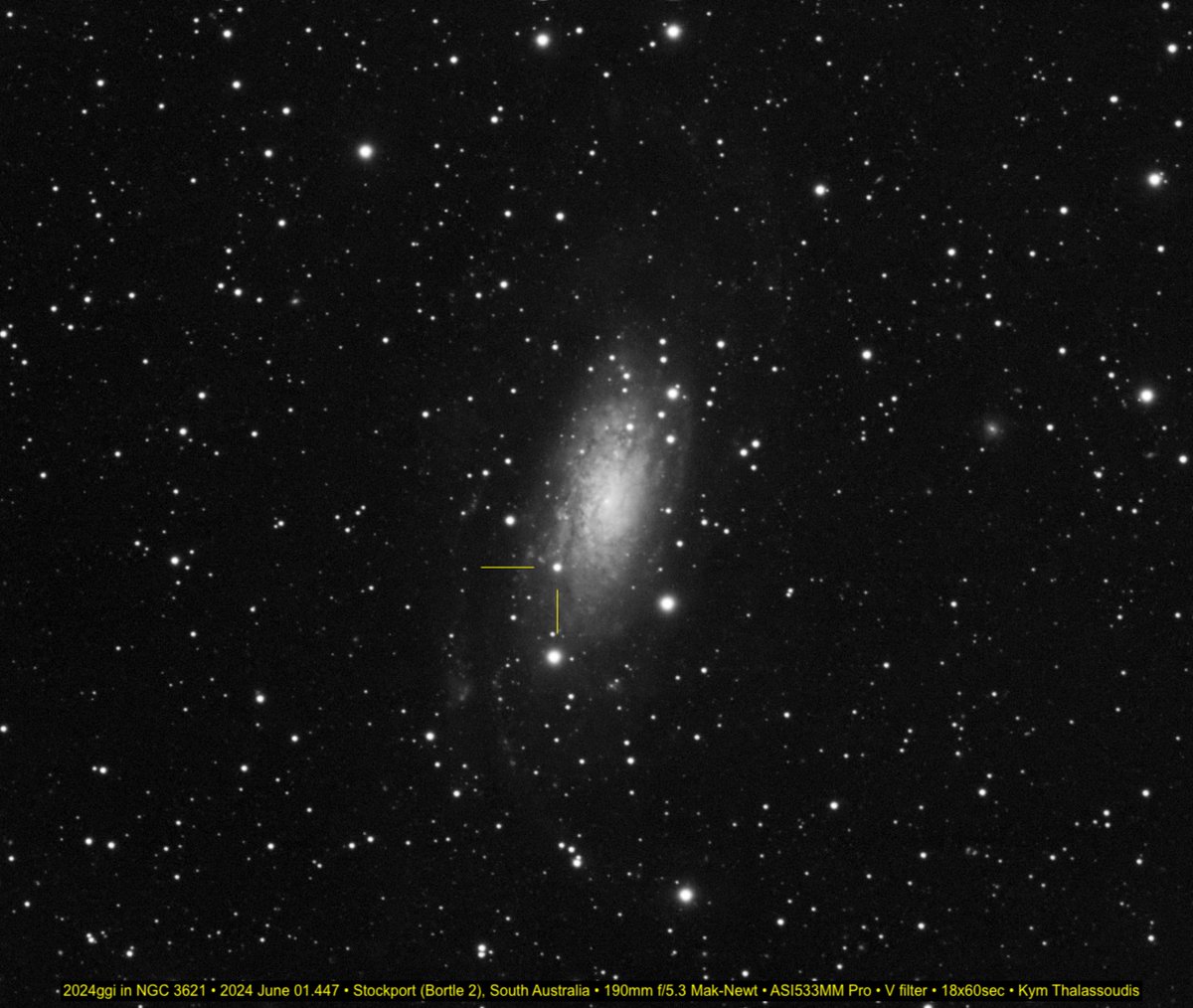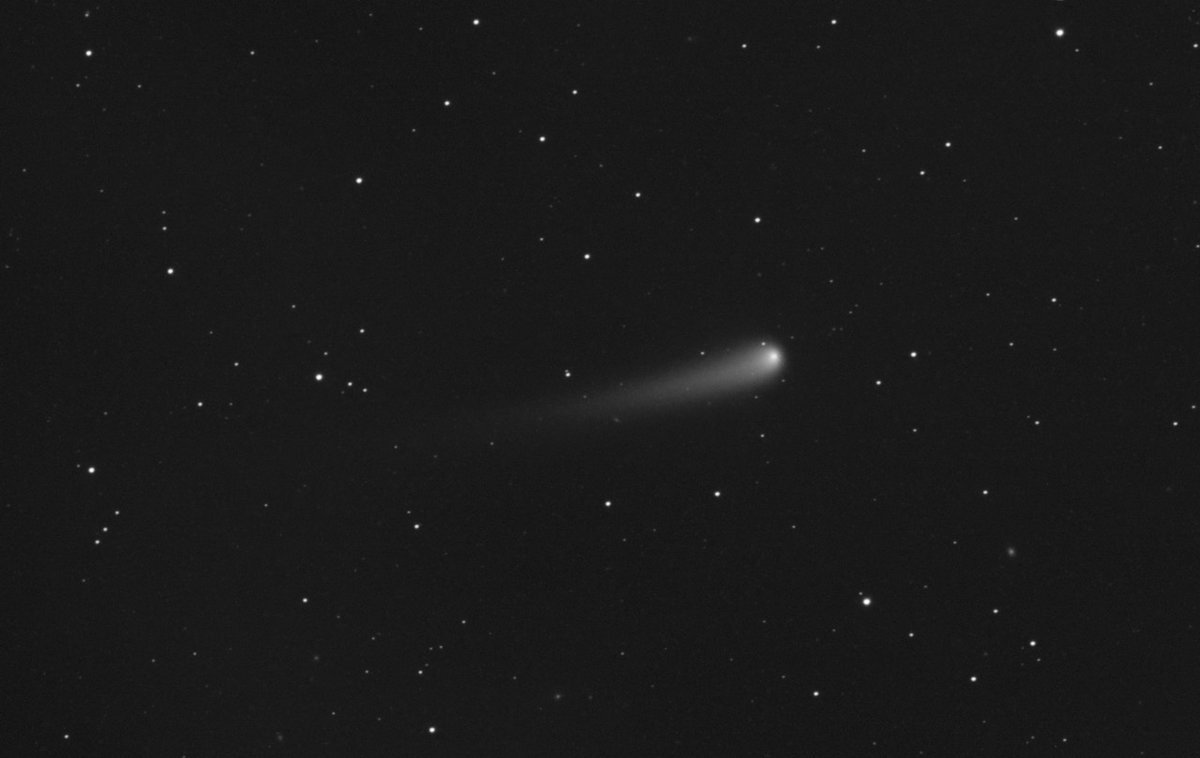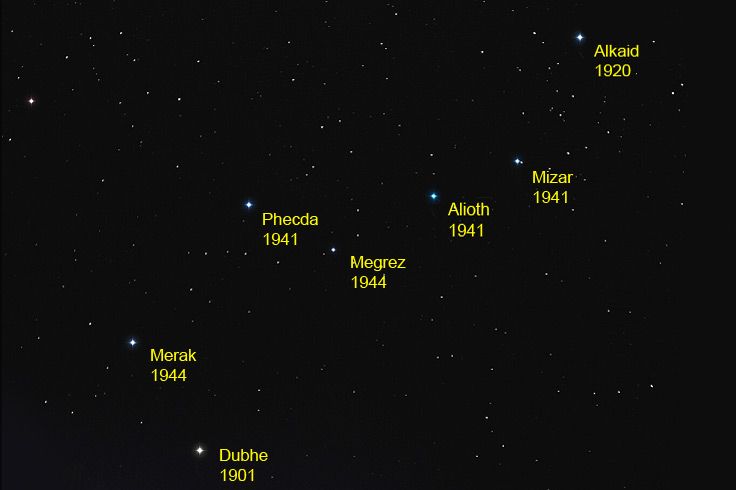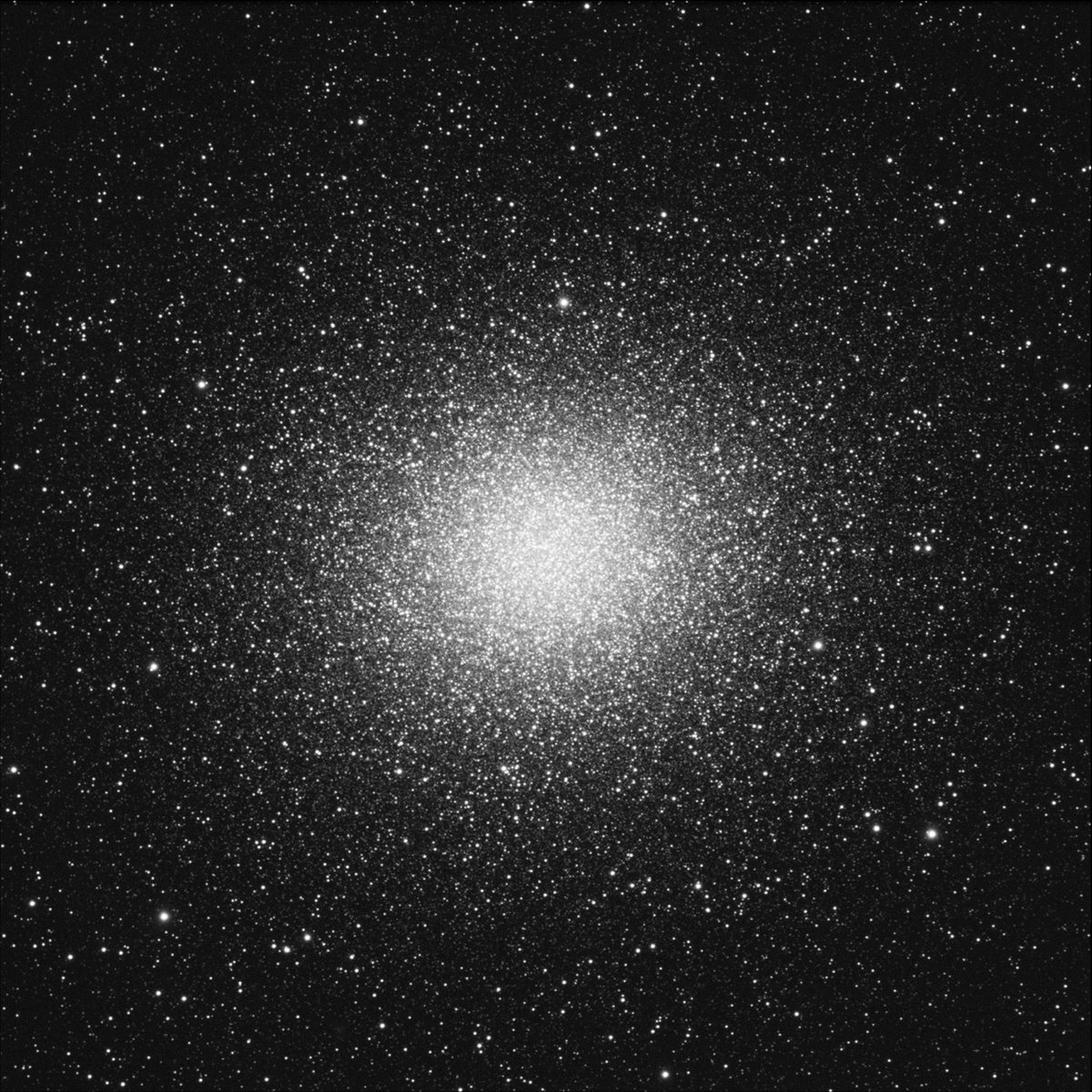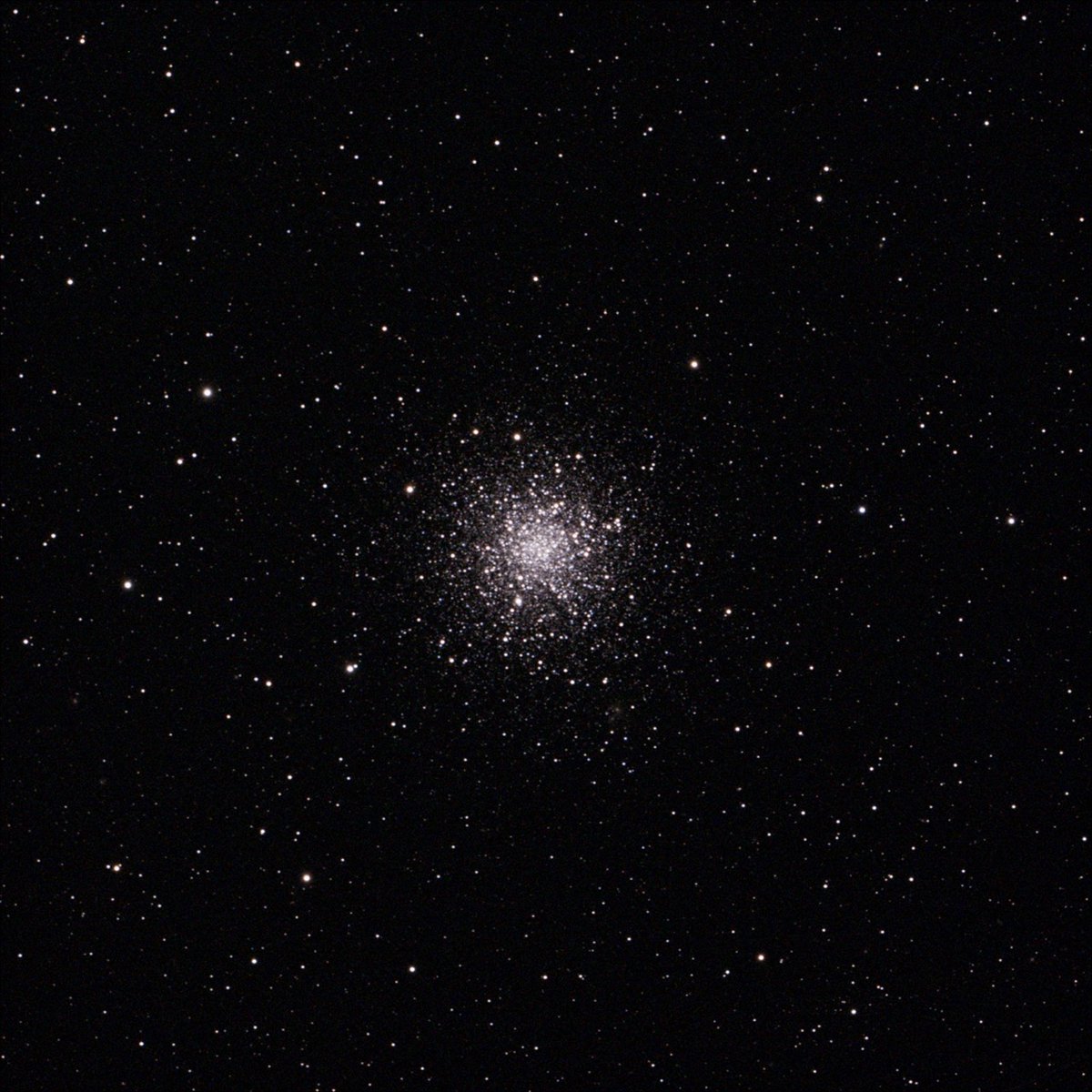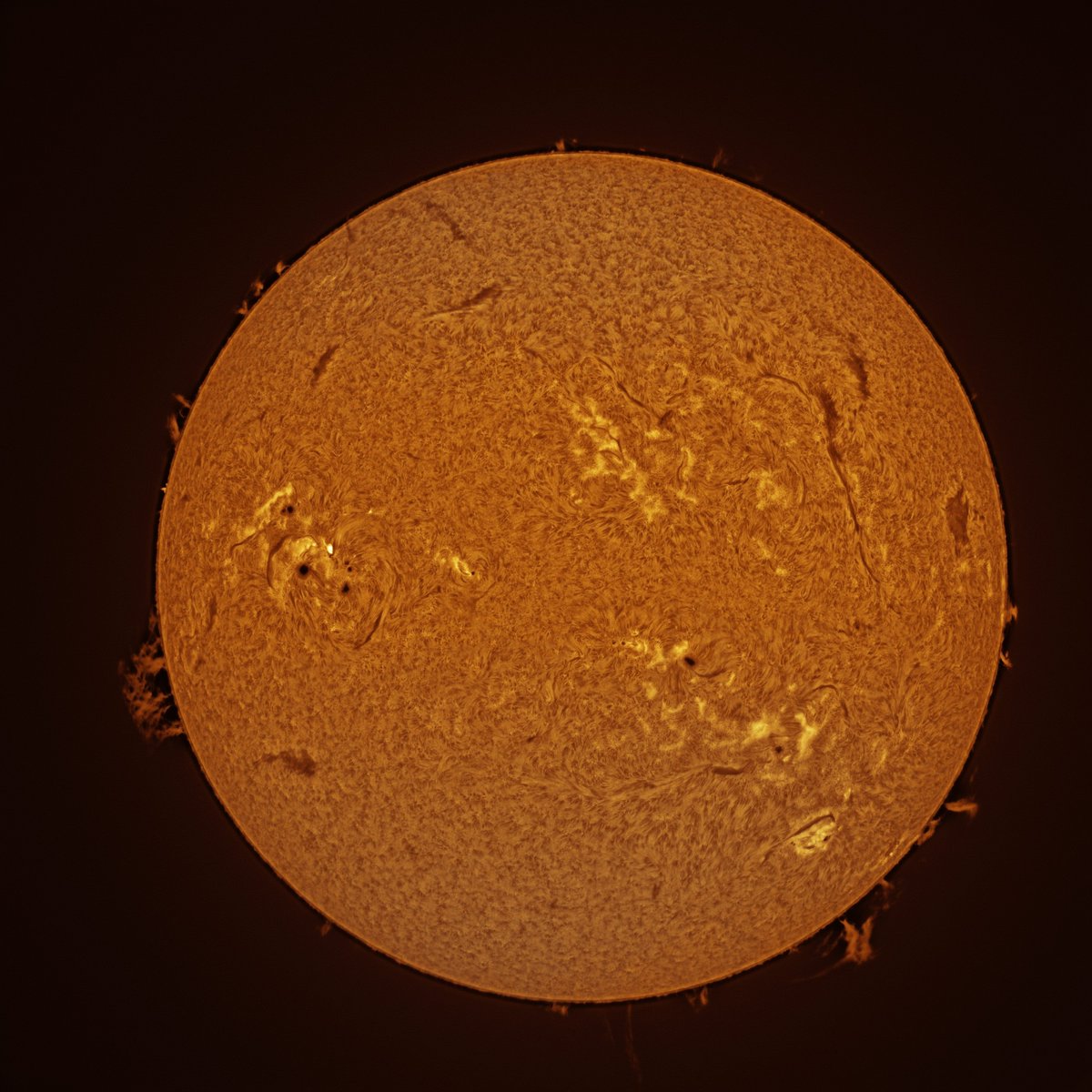
Skymaps.com
@skymaps
Publishing The Evening Sky Map since January 2000. A free easy-to-use 2-page monthly all-sky map & sky calendar of celestial events for sky watchers worldwide.
ID:14854396
http://Skymaps.com 21-05-2008 09:33:58
4,3K Tweets
11,0K Followers
190 Following


4 June: Mercury 0.12° SE of Jupiter at 11h UT (12° from Sun, morning sky). Mags. −2.0 and −1.1.
A monthly calendar of celestial events features in every issue of The Evening Sky Map (PDF): skymaps.com/tesm/
#astronomy #stargazing #space


2 June: Moon near Mars at 22h UT (morning sky). Mag. 1.0.
A monthly calendar of celestial events features in every issue of The Evening Sky Map (PDF): skymaps.com/tesm/
#Astronomy #stargazing #Mars



Reminder -- The Evening Sky Map (PDF) for June 2024 is now available to download at skymaps.com/tesm/ Please share & enjoy the stars in June and beyond! #stargazing #astronomy #space #stars
